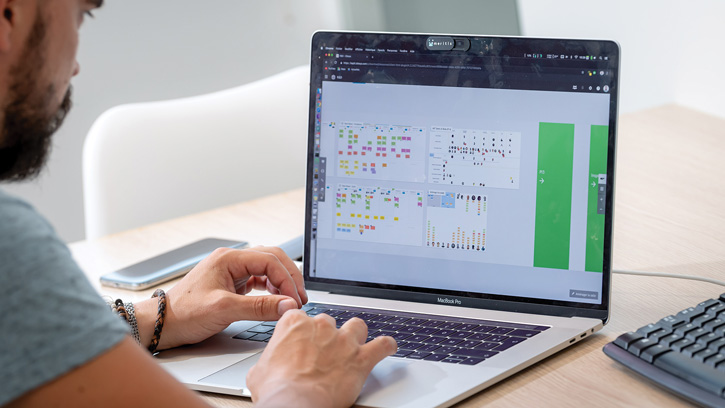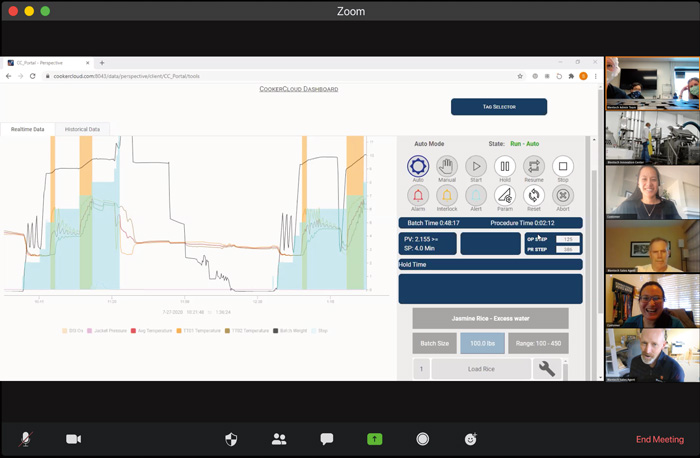Off-Site But On Track: Digital Tools Enable Operations
PROCESSING
The global pandemic has taught us valuable lessons about the importance of interpersonal communications in business as well as the roles that technology can play. Although working from home was already gaining in popularity in the technology sectors, it was much less common in the food industry prior to the advent of the COVID-19 crisis—often for good reason. Manufacturing requires physical presence, and development depends on creative collaboration, neither of which easily translates to a virtual platform. As shelter-in-place orders and travel restrictions were imposed, businesses continued to operate, and the issues and opportunities of a remote approach began to present themselves.
With remote work here to stay, this month’s column will explore some lessons learned working remotely in recent months, focusing on critical enabling support technologies. These include cloud technologies for consulting, development, testing, and commissioning of foods without travel.
The great news is that remote work is effective and can, when deployed properly, save money and time while enabling better use of technical teams. Due to recent advancements, supportive systems, technologies, and programs are often simple and easy to deploy. While they are not always a universal solution, they do offer a substitute and, in many cases, an accelerant to the traditional “travel to meet” method. Given that remote collaboration has the potential to lower operational costs by speeding up communications, it is likely that much of it will remain in place for the foreseeable future.
Adapting to a remote work future has different considerations, depending upon the specific job function. For example, transitions were comparatively easy for sales and service roles while adjustments for consultants, engineers, and developers were perhaps more challenging. And as for production, people must be present to produce.
Developing Digital Systems
The process of adaptation to remote work is formulaic, and whether we are looking to use technologies to systemize our development processes, our testing processes, or even new equipment commissioning, the fundamental building blocks are the same:
a) Connect the people involved in the process.
b) Map the steps or stages of the process, identifying creative and procedural work.
c) Enable information collection systems and communication systems.
d) Create a framework to track results.
When adapting processes to remote work, it’s valuable to understand a few principles. First, it doesn’t need to be “all in” to be effective. Some aspects of work can be done remotely while others may require a site presence. Understanding that, reducing travel will always reduce both viral exposure and operational costs. Second, as a team considers remote work, clearly understanding if the work includes only internal team members as opposed to also requiring customer or vendor coordination will guide critical decisions about the platforms selected and the information shared. Third, new technologies must be effectively deployed. Going beyond installation to training, configuration, and management requires working proactively with the information technology team.
The key point is that technologies can enable effective work, but it requires a systemic approach to defining work processes internally and externally as well as notable changes to how we think about our work. It’s also important to recognize that the needs of creative work are very different than the needs for procedural work and that some processes are a hybrid of this. An example that will be discussed in more detail is using technology to test and commission equipment. These processes are procedural as utilities are connected, following well-defined steps; as unexpected challenges arise, a creative problem-solving process is needed to progress.
Communication and Collaboration
Effective communication platforms are the most important element of a successful remote work program. There are an intimidatingly large set of options to consider when evaluating technologies for communication, but at the same time, these are often the easiest to deploy. Of course, training, team culture, and team norms may need to be developed to ensure effective use. The Google G Suite is one technology that facilitates comprehensive remote work. Because this platform contains email, chat groups, video conferencing, integrated calendaring, shared drives, and collaborative Google Docs, it provides a single source for communication and collaboration. Alternatively, chat platforms such as Slack or other instant messaging systems are also widely available. In many options, chat group messages are saved and searchable, which enables rapid communication that is normally within the framework of the governance systems required by corporations. Additional training of teams to ensure that procedures and methods for use of hash tags for searchability are clear also increases the value of these technologies. When encrypted file sharing is a requirement, systems such as Citrix provide the security needed for the most sensitive information.
Cloud-based project management is particularly helpful for remote management of commissioning new equipment. Project management programs such as Basecamp allow multiple users to collaborate in real time, tracking components and tasks required to accomplish a broader project. While systems such as Basecamp are less structured than Microsoft Project, this flexibility is very helpful to address the flux of new information and decisions needed during commissioning and new line startups. Basecamp and other similar systems also allow sharing of images and feed-style messaging and can offer daily reports of progress so that remote managers can stay in the loop at all times.
Virtual Visual Management
One area that is seeing significant innovation and growth is the need for virtual visual management systems. These systems have the potential to replace the in-person visual management systems used in production, development, and management. The platform created by iObeya (iObeya.com) is a platform that provides a range of predesigned as well as custom-configurable visual management boards. According to Tim McCracken, vice president and general manager, Americas, at iObeya, food operations have successfully employed visual management systems to replace the Gemba Walk approach used in lean manufacturing. This process typically involves a walking tour of a facility to assess the performance of each operation, often using information obtained on visual management boards placed strategically throughout an organization. iObeya allows companies to easily place this information on a secure cloud server so that these boards are accessible to anyone authorized to view them on-site or elsewhere.
Additionally, McCracken noted that this technology provides structures and a framework for collaborative and creative work such as ideation, brainstorming, and development planning. These systems, when used in concert with video conferencing, can enable the spark of creative ideation or problem-solving that is needed for development work.
To effectively support a field team remotely as required in consulting and commissioning activities, it is important to have access to the ability to both communicate with the people on-site quickly as well as have access to the real-time data streams generated by the process equipment. Without this technology, the process of remote startups is hampered. After-market systems are available for legacy equipment that may lack these connections. This is great news for companies that may not have fully completed their digital transformation before 2020.
Mike Llapitan of Wonderware (an Aveva company) noted that products like its Edge solutions allow companies to connect to any industrial controller, including devices such as scales that use an ASCII interface, to securely connect and transmit data to cloud storage and display solutions such as Wonderware. Llapitan said that products like this have been gaining in popularity for the past eight years and that demand is accelerating. Although the applications for these technologies are diverse, he said that in the food and agriculture area, he has observed suppliers of wastewater treatment equipment systems expand their service support without travel using these technologies coupled with a livestreaming dashboard. This allows the technicians to support more companies more quickly and without risky, costly travel. Given the low cost of these technologies, a remote connection should be a key consideration for all new equipment.
Specialized tools for collaboration have been emerging but now are proving their value in the era of remote work. One aspect that can be challenging to adapt to is aligning teams on complex concepts for problem-solving. This is the reason there is a whiteboard in every conference room around the world. Bringing these processes to a virtual platform is essential yet challenging. Technologies like iObeya’s visual management platforms can support this in part, and working in tandem with the collaborative features of technology such as LucidChart, they can help teams convey complex concepts in a virtual meeting. The collaborative features of software systems such as LucidChart help teams to map process concepts in real time.
How Blentech Makes It Work
Blentech had to engage in this same adaptation. The company found that combining these technologies allowed the organization to execute an agile response. When the travel bans were announced, the company had a long backlog of tests in the Innovation Center as well as new equipment startups. Thinking creatively about what could be accomplished with speed, the first remote factory acceptance test was a smartphone video link walk-through of a machine prior to shipment. This quickly grew into a series of highly successful remote tests and trials in the Blentech Innovation Center using a combination of video footage from different vantage points, handheld cell phone streaming, and overhead GoPro and streaming data from its CookerCloud technologies.
Many equipment companies and organizations have taken similar steps. The imaging equipment company Tomra has launched a virtual testing and virtual showroom platform where customers around the world can learn, test, and collaborate.
Remote work may not replace all our activities, but it’s here to stay. Enhancing the ability to integrate remote work technologies is an important part of our digital transformation strategies. In particular, the ability to provide our technical expertise remotely increases our ability to support the food industry. This will have long-term positive impacts on our careers, our businesses, and our industry.






